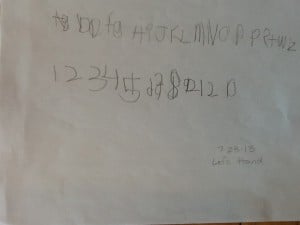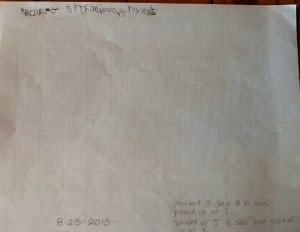Symptoms
JN was a normally functioning 3½-year-old when he was involved in an auto accident. Neuroimaging revealed hemorrhages, fractures with compression of the left ventricle. He had a craniotomy to reduce pressure and was put in an induced coma shortly after the time of injury. He was in the hospital for 2 months. He was diagnosed with brain injury, ADHD, anxiety and had trouble sleeping.
JN required maximal verbal cues for functional task completion, his social skills were not age appropriate and his auditory self-stimulation was disruptive to those around him. Deficits in visual receptive executive functioning, fine and gross motor skills were significantly impacting daily activities, social and academic success.
Interventions:
JN received 26 90-minute treatment sessions, three times a week with the iLs Pro in conjunction with Occupational Therapy.
Results
The changes are perhaps best seen through the video in June taken on the first iLs session, and the after video taken in August on one of the last sessions. JN’s ability to complete the playbook activities and the amount of coaching necessary changed dramatically. Each video also shows his handwriting sample on that day.


| Pre-iLs | Post-iLs |
| A beginning sample of handwriting was taken and maximal verbal cues were required for him to write in the correct order. He wrote large letters, made letters in reverse directions at times, and began the second line on the right side of paper and went to the left. | In the post-iLs program sample he demonstrated the ability to independently write the entire alphabet without verbal cues. He was also able to write them in age appropriate size and on a straight line. In addition, he was distracted and paused, but was able to recall where he was in the alphabet and to continue on. |
| Before the iLs program JN was not able to sustain balance on one foot for 20 seconds. | Post-iLs program he was consistent with balancing on either leg for 20 seconds. |
| Pre-iLs program JN was not able to bounce a ball against the wall and catch it repetitively. | He demonstrated the ability to bounce a ball on the floor and let it bounce twice before catching it with opposite hand. This requires cognitively counting, planning motor activity, visually attending, and calculating the rhythm of the bounce for success. He was 90% successful post-iLs program. |
| JN began the iLs program unable to successfully perform a motor and cognitive activity successfully and repetitively. | By the end of the iLs program he was able to juggle two bean bags and say the alphabet at the same time with about 90% success. In addition, he was able to be interrupted by a dropped bean bag and begin (approximately) where he left. |
| Pre-iLs program JN completed the dot-to-dot pages with poor visual accuracy to touch the dots and find the next letter. | Post-iLs program JN demonstrated the ability to independently find all the letters, A to Z, and to stay on the dots with each letter. |
In addition, he required maximal verbal cues with most of the pre-iLs testing and only required mostly minimal cues to attend during the post-iLs testing.
It is amazing to see the great improvements made in a short time, 2 months 6 days. I have worked with JN many times over the past 8 years. I have never had such good results in a short time. I would recommend further iLs programs to continue the success he has made. More focus would be on his fine motor skills, increasing duration to attention to tasks, and visual motor integration skills. – Amy Dubey, OTR, CBIS



